blog
Interview with photographer Julie Fowells
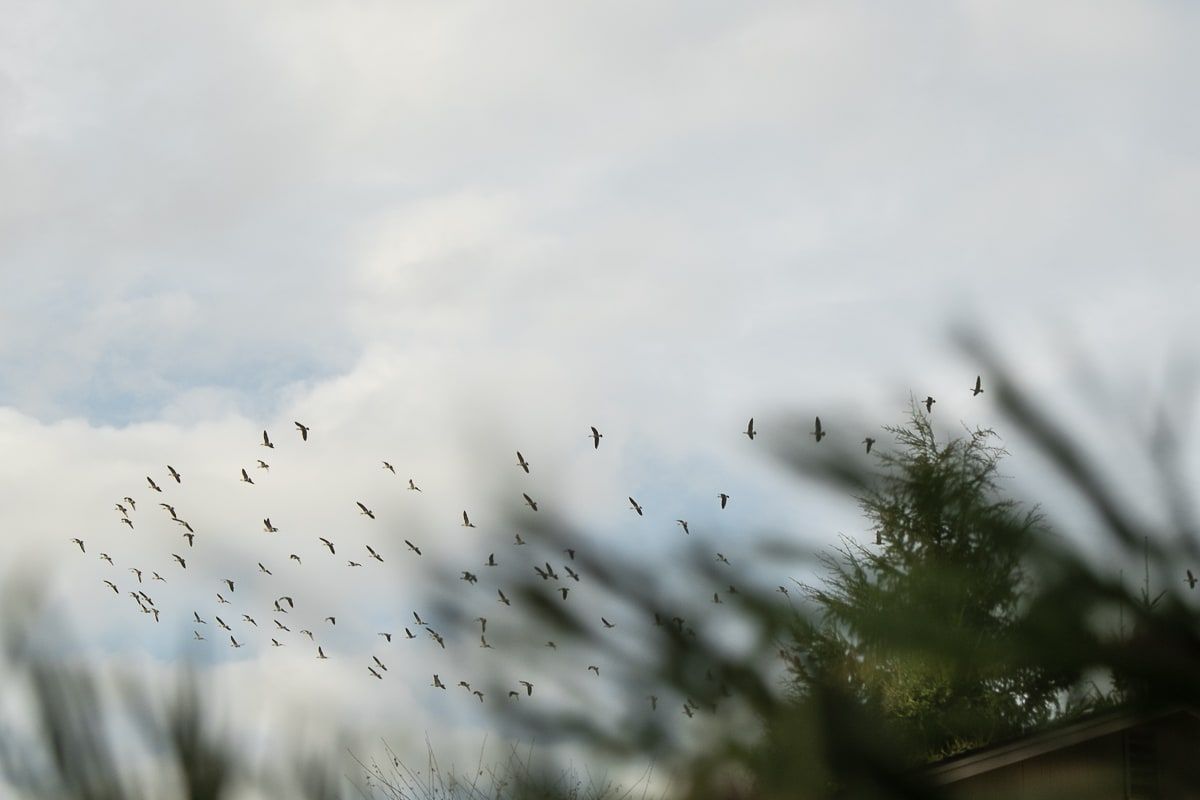
Untitled
F-Stop Magazine: How did you first become involved in photography and what led to you working in this medium as an artist?
Julie Fowells: My father gave me an SLR at 16, when I was preparing to go to the Philippines. I didn’t see the photos I’d made during that time until I returned 14 months later, because film processing facilities were scarce in the rural area where I lived, so by the time I had a chance to look at them, the pictures felt like they’d been taken by someone else, in a place I’d never been. I couldn’t believe I’d shot what I was looking at, or even that I’d been there at all, because I didn’t remember it that way. Even now I feel like the world is spinning around me too quickly to grasp any significant detail; I never seem to really know what’s going on until I’ve had a chance to reflect on it. Once I recognized photography’s ability to give me a second chance, to allow me to relive something I’d missed the first time, I was completely hooked. I worry sometimes that this makes me a lazy observer, like I’m not living or seeing in the present, but in reality I think it provides the freedom to absorb more than just the visual aspects of a moment in time. The photograph just serves as reminder, or record of a memory; a placeholder I can refer to later. This has always been a way for me to process what I see, but in as much as I only remembered life in the Philippines by photographing it, those first images have a lot in common with this current series.
F-Stop: The current issue of F-Stop Magazine includes your project “Things I Remembered I Forgot,” can you tell us about this project?
JF: I didn’t photograph my mother very often during the long months I spent watching her disappear. Despite a disconcerting lack of self-awareness, a side effect of the Alzheimer’s that eventually took her life, the camera made her self-conscious, and I couldn’t bring myself to subject her to that gaze. Instead, I pointed the camera in the other direction, curious to see what was happening outside our tiny bubble of meals and medication management. Gingerly at first, I began to tiptoe through the landmines crowding my emotional landscape simply by turning around; the earth was still spinning, even as I sat by her bed, perfectly still. I documented my tiny discoveries meticulously, almost scientifically, greedily hoarding every nuance of life and death in what felt like a state of desperation; an attempt to freeze the world until I was free to actually see it.
F-Stop: Do you have a favorite image in this series? If so, which one and why is it the image that speaks to you most?
It’s impossible for me to separate the most emotionally charged images from the ones that I suspect are the strongest visually and/or conceptually, so I can’t say for sure. But, perhaps because it’s the image that anchors these pictures as a series… more likely because I made it immediately upon returning to my mother’s house after days by her hospital bed, and realized only then how close I’d come to losing her… the photograph of my mother’s stained sheets resonates for me like none other.
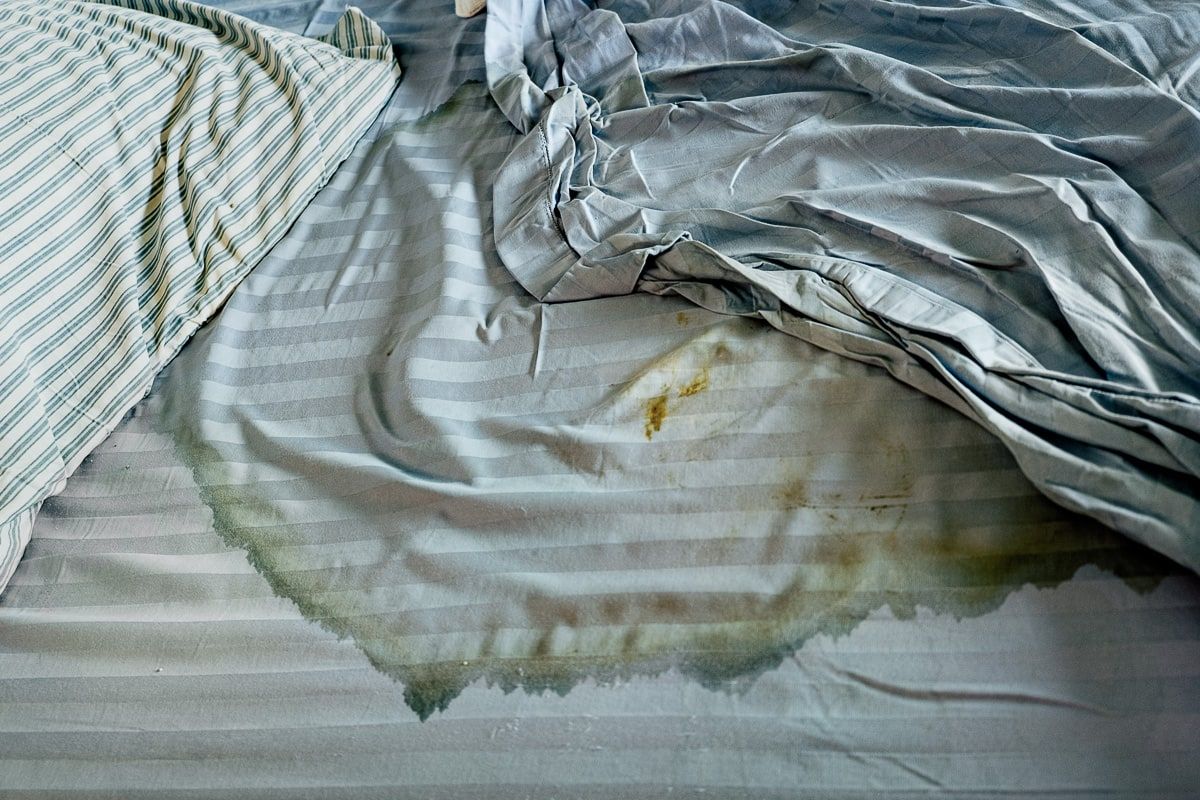
The Sheets
F-Stop: How does this project relate or differ from your other work?
Because they focus on minutia, the images have a lot in common with most of my other work, but the process was completely different. In this project I was capturing the world around me as I found it, whereas in most of my other projects, things are composed and intentionally placed. Instead of manipulating objects to mimic portraiture, I was just looking around to see what I could find – the very nature of documentary photography, although I don’t consider myself a documentary photographer.
F-Stop: Do you feel there is a significant difference between “documentary” style photography versus ‘commissioned’ or ‘style’ or ‘fashion’ photography as a label? How do you define those genres, or are labels even important?
I think, as the look of documentary work has become a predominant aesthetic in commercial photography, the lines are becoming increasingly blurry. I have many friends who are documentary photographers – serious journalists, for whom any form of manipulation to the scene or final image is anathema to their craft – who might argue that this phenomenon cheapens their work, but I think including the word “style” delineates the two rather succinctly in conversation; documentary style photography is different from documentary photography. That said, lots of current documentary work embraces a softer, less gritty and more “artsy” (for lack of a better word) tone that, to me, enriches the ideas explored in the images… renders them more personal, more intimate, therefore perhaps more relatable… but at the same time easier to look at, so perhaps teeters on the edge of that distinction. Similarly, I think the tendency towards more realistic representations of people in style and fashion photography is a welcome reprieve from the slick and overproduced images that used to grace the pages of magazines. Theoretically, intent is the factor that defines these genres: is the work designed to be appealing or made to tell a story? But even then, both things can be true. I hope both kinds of work I do thread that needle in some way.
F-Stop: Do you feel your work makes a comment on a universal level, as well as the personal level? (in this project, or in comparison to your other projects posted on your website)
I certainly hope so. This quality is the hallmark of a good photograph to me. I’d like to believe that the images resonate with people in some way, whether or not they’ve had a similar experience with a dying parent. Everyone has faced the fear of losing someone, and everyone has some experience with grief.
F-Stop: What/who are your photography inspirations – and why?
Right now I’m revisiting the work of Mona Kuhn, Cig Harvey, and Odette England.
F-Stop: If these photographers have qualities that you admire/desire — how does that ‘inform’ your own creative process?
As a woman I’ve historically been reluctant to address themes of domesticity, intimacy, and family, topics I’ve always feared could easily lurch into the realm of the sentimental… but these photographers take on traditionally feminine subject matter without any self-consciousness, and this is incredibly liberating to me. A fear of being pigeonholed into a certain category of “woman” photographer prevented me from showing work that was meaningful to me for a long time, but I’m finally gaining confidence in the universal significance of home and the intricacies of personal relationships
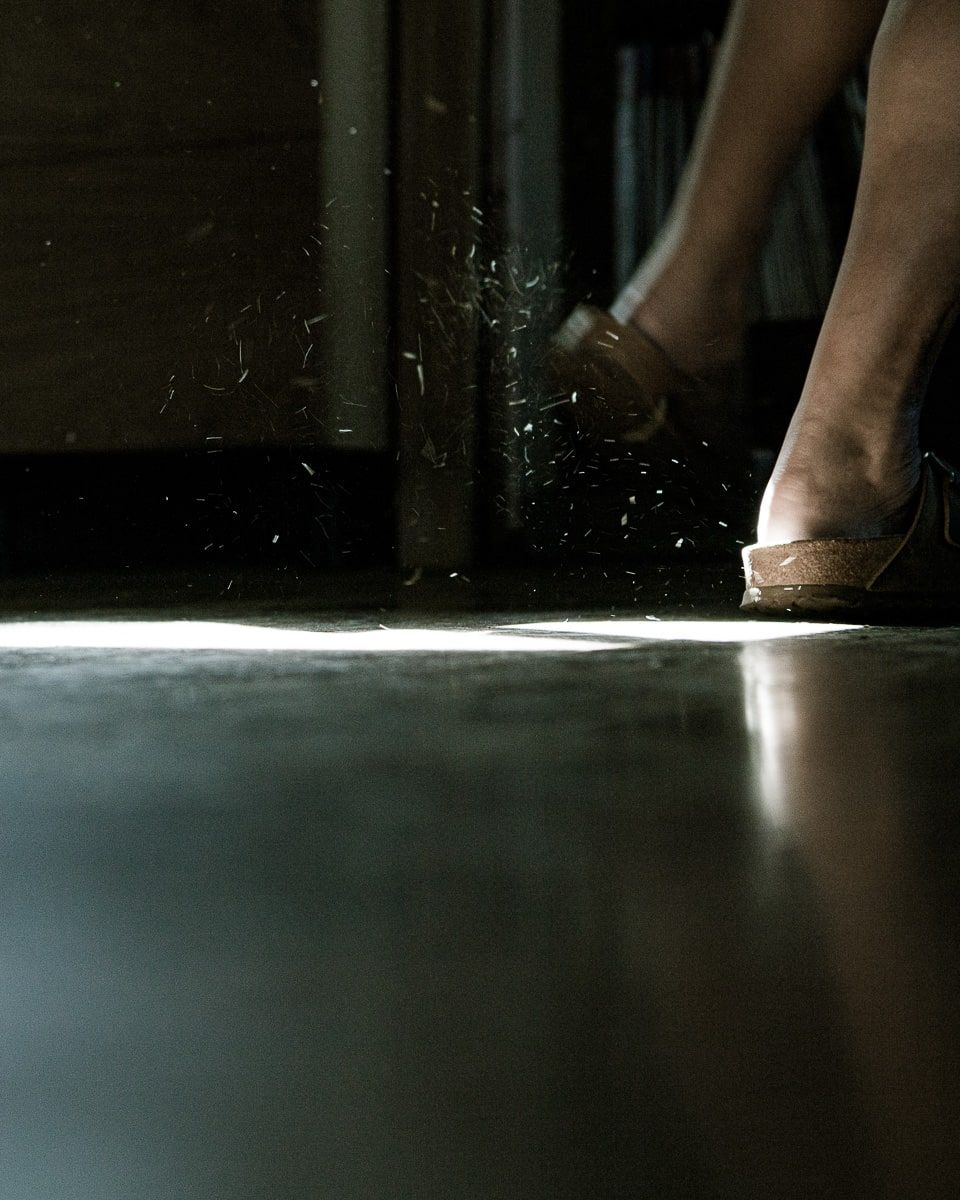
To Dust
F-Stop: How do you decide to take on new projects? Do you work on assignment for news agencies, or are you solely independent?
I’m an independent freelance photographer, and fortunately can find a way to express my perspective on even the most seemingly uninteresting assignments. I think this is why it works. In terms of taking on personal projects, they just kind of come to me, as opposed to seeking them out. An object or scene presents itself to me, I shoot it, usually incidentally at first, and then another, and eventually a theme emerges that coalesces into a project. Sometimes I worry that this makes my work somehow less legitimate, when the imagery precedes the theoretical underpinnings, but I’m getting past that fear.
F-Stop: Are you working on any other projects currently?
Right now I’m working on a project called “Fallen Fruit”, an ongoing series documenting the imperfect, damaged, or rotten produce I unearth from the bottom of my crisper drawer, or find hanging on the vine in my garden. I usually feel compelled – almost obligated – to document what I’ve wasted, like a catalog of failures, or a confession of my sins. As evidence my tendency to anthropomorphize everything, I photograph them as though taking their portraits, a process I find strangely captivating. I think I find them so intriguing because the state feels somehow familiar: ravaged by time, imperfect by circumstance, I recognize my own vulnerability to the forces of nature in every defective piece of fruit.
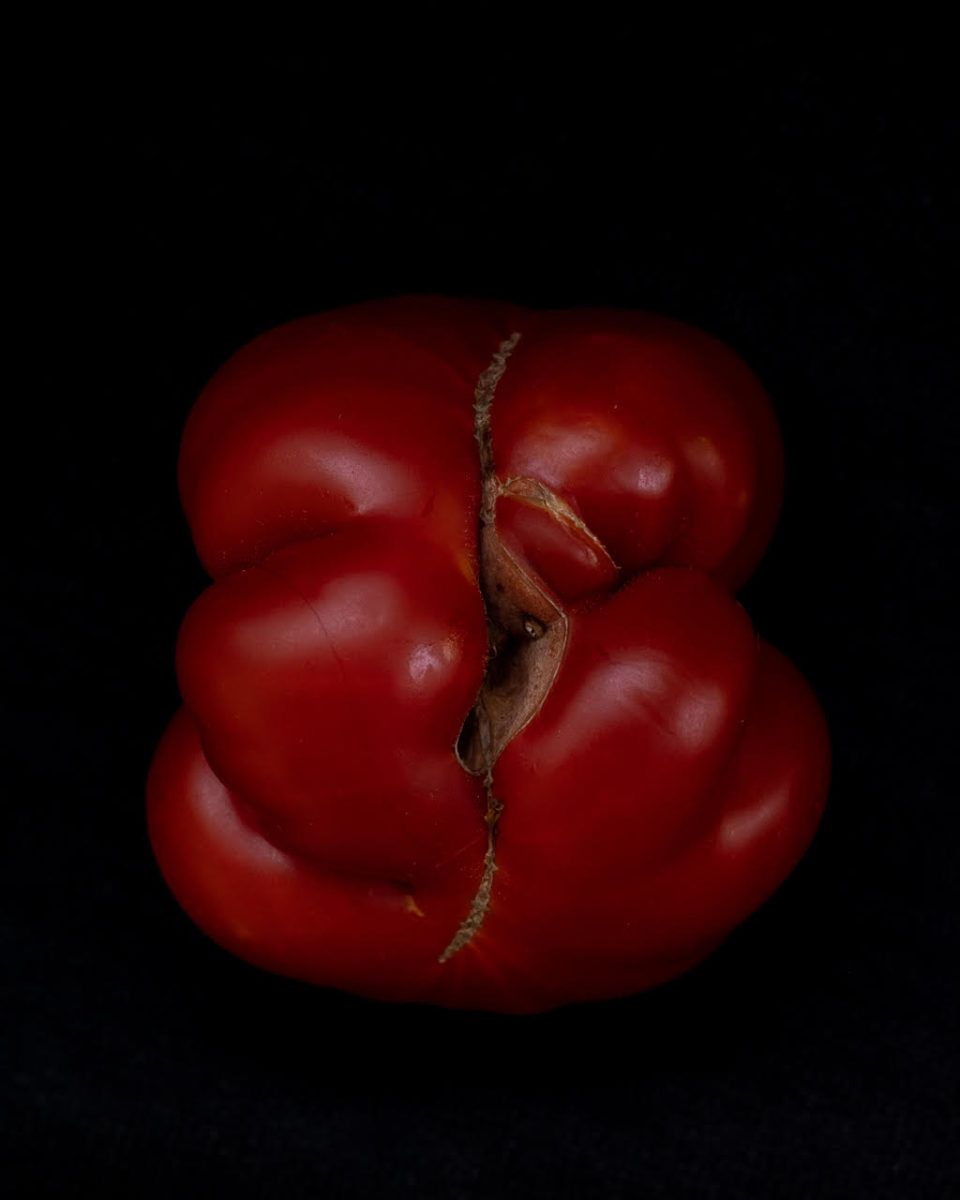
From the project Fallen Fruit
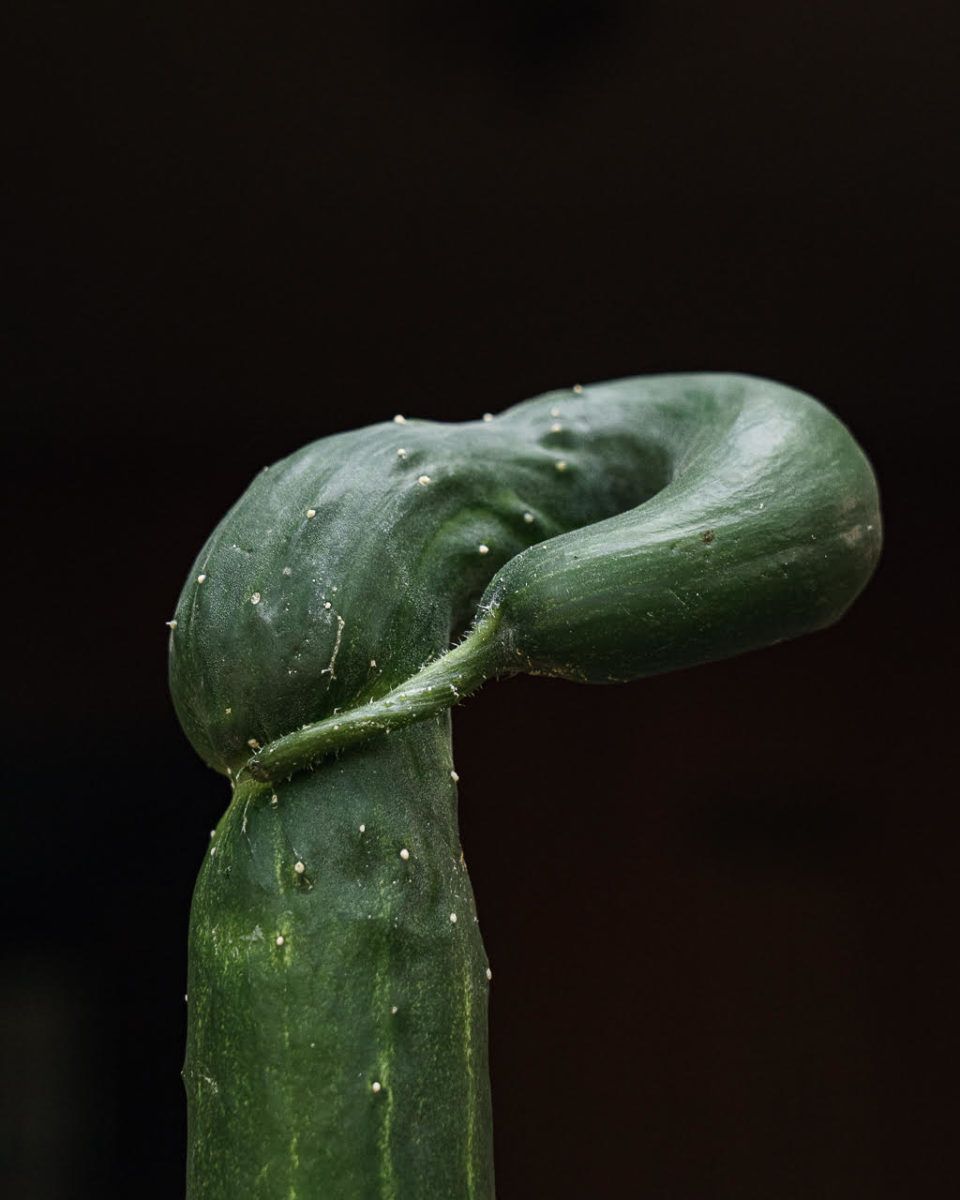
From the project Fallen Fruit
::
Julie Fowells grew up in the kind of small town every teenager wants to get out of, but now lives in Los Angeles, where she spends her time trying to recapture the kind of life she left behind… growing her own food and playing guitar in a rocking chair on the porch. This nostalgic approach to life in a major metropolitan city inspires an intense fascination in the tension between the city and the natural world — our desire to experience it, our need to contain it, and our attempts to push it aside.
Fowells has only recently returned to photography after a career as a musician, but both mediums have more in common than one might think: as in music, the good stuff happens in the space between things, and that’s where her interest lies. Her photographic practice endeavors to capture the fraught relationship between the environment and the people who inhabit it, attempting to tease out the narrative they create… especially as it reveals itself when all that’s left of a person is a trace.
To see more of Julie’s work visit the Portfolio 2022 issue of F-Stop or her website www.juliefowells.com
Location: Online Type: Featured Photographer, Interview
Events by Location
Post Categories
Tags
- Abstract
- Alternative process
- Architecture
- Artist Talk
- Biennial
- Black and White
- Book Fair
- Car culture
- charity
- Childhood
- Children
- Cities
- Collaboration
- Cyanotype
- Documentary
- environment
- Event
- Exhibition
- Family
- Fashion
- Festival
- Film Review
- Food
- Friendship
- FStop20th
- Gun Culture
- Italy
- journal
- Landscapes
- Lecture
- love
- Masculinity
- Mental Health
- Museums
- Music
- Nature
- Night
- photomontage
- Podcast
- Portraits
- Prairies
- River
- Still Life
- Street Photography
- Tourism
- UFO
- Wales
- Water
- Zine

Leave a Reply